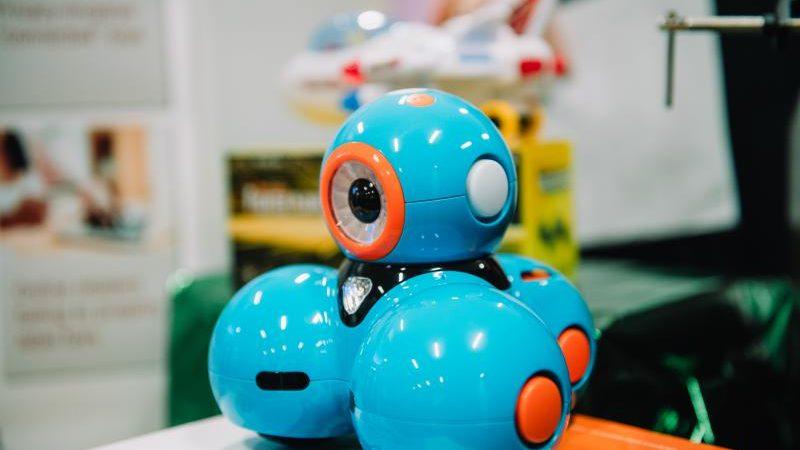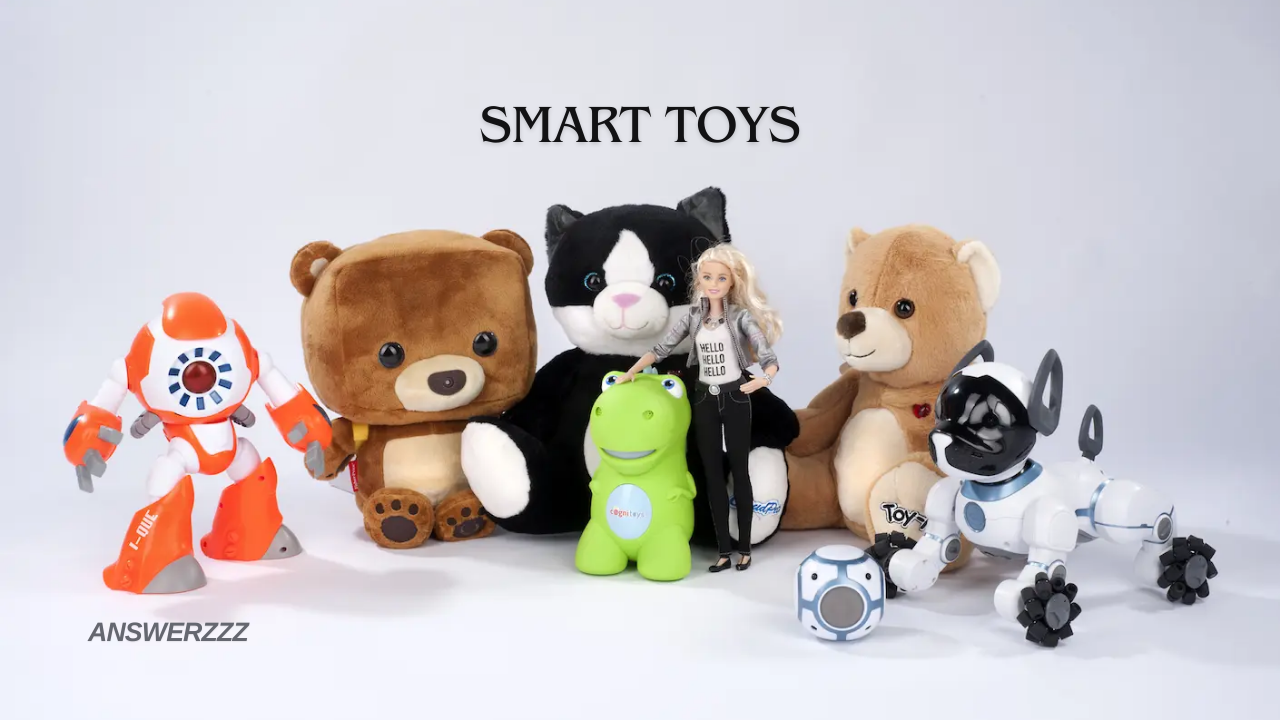In an era where technology permeates every aspect of our lives, the realm of playtime has not been left untouched. Smart toys are emerging as a revolutionary trend, blending traditional play with cutting-edge technology to create interactive learning experiences for children. This article explores the definition of smart toys, their benefits, and challenges, and how they are shaping the future of education and play.
What Are Smart Toys?
Smart toys are technologically enhanced playthings designed to engage children in meaningful play experiences. Unlike traditional toys, which often focus on physical interaction and imaginative play, smart toys incorporate digital elements such as sensors, artificial intelligence (AI), and connectivity to the internet. This integration allows these toys to respond to a child’s actions, adapt to their learning pace, and provide real-time feedback.

Examples of smart toys include interactive robots, app-connected dolls, augmented reality (AR) puzzles, and educational games that utilize tablets or smartphones. These toys not only entertain but also foster cognitive development, creativity, and social skills, making them valuable educational tools.
The Evolution of Smart Toys
The concept of toys that integrate technology is not entirely new. Simple electronic toys have been around for decades, from the classic Speak & Spell to programmable robots like LEGO Mindstorms. However, advancements in technology, particularly in AI and connectivity, have significantly transformed the capabilities of modern smart toys.
In recent years, the rise of smartphones and tablets has paved the way for toys that connect to apps, enhancing the play experience. For instance, toys that use AR allow children to see digital characters or information superimposed on their physical environment through a device’s camera. This blend of the physical and digital worlds creates immersive experiences that were previously unimaginable.
Benefits of Smart Toys
1. Enhanced Learning Opportunities
One of the primary advantages of smart toys is their ability to create enriched learning experiences. Many smart toys are designed to teach specific skills, such as coding, math, or language, through interactive play. For example, toys like Osmo use a tablet and physical game pieces to teach children about letters, numbers, and problem-solving in a hands-on way. This approach aligns with the constructivist theory of education, where children learn by doing.
2. Personalization
Smart toys can adapt to the individual learning styles and preferences of children. Through sensors and AI algorithms, these toys can assess a child’s performance and adjust the difficulty level accordingly. This personalization helps to maintain engagement and ensures that children are adequately challenged, promoting a growth mindset and resilience.
The Rise of AI-Powered Learning Tools: Enhancing Education for Kids
3. Encouragement of Creativity and Imagination
While smart toys are often associated with structured learning, they also provide opportunities for open-ended play and creativity. Toys that encourage storytelling, role-playing, or artistic expression foster imagination and creative thinking. For example, the interactive doll Luvabella responds to a child’s touch and voice, prompting imaginative scenarios while also teaching empathy and nurturing skills.
4. Social Interaction
Smart toys can facilitate social interactions among children. Many of them are designed for collaborative play, encouraging teamwork and communication. For instance, some coding robots require children to work together to solve challenges, fostering social skills and cooperation. Additionally, toys that connect to online platforms enable children to play with friends remotely, enhancing socialization in a digital age.
5. Data-Driven Insights for Parents
Many smart toys come equipped with apps that provide parents with insights into their child’s play patterns and progress. These data-driven reports can help parents understand their child’s interests and areas where they may need additional support. This transparency fosters a more active role for parents in their children’s learning journey.
Challenges and Concerns

1. Screen Time and Digital Overload
One of the significant concerns surrounding smart toys is the potential for increased screen time. With many toys relying on apps or digital devices, there is a risk that children may spend too much time in front of screens, detracting from physical play and outdoor activities. Balancing screen time with other forms of play is essential for holistic development.
2. Privacy and Data Security
Smart toys often collect data about a child’s play behaviour, which raises concerns about privacy and data security. Parents must be aware of what information is being collected and how it is used. Manufacturers should prioritize robust data protection measures and provide clear privacy policies to ensure families feel safe using their products.
3. Dependence on Technology
While smart toys can enhance learning, there is a risk that children may become overly reliant on technology for entertainment and education. It is crucial to strike a balance between using smart toys and engaging in traditional play experiences that foster imagination, creativity, and physical activity.
4. Cost
Smart toys often come at a premium price compared to traditional toys. This cost can be a barrier for some families, leading to disparities in access to educational technology. Manufacturers and policymakers should consider ways to make smart toys more affordable and accessible to all families.
5. Limited Longevity
As technology evolves rapidly, some smart toys may become obsolete within a few years. Parents may be hesitant to invest in expensive toys that may not have long-term usability. This concern calls for manufacturers to create products that can be updated or integrated with new technologies.
Popular Smart Toys in the Market
To understand how smart toys function in practice, let’s take a look at some popular examples currently available:
1. LEGO Boost
LEGO Boost is an interactive building set that combines traditional LEGO bricks with a tablet app. Children can build and program their creations to perform tasks, such as moving, making sounds, and responding to touch. This toy introduces coding concepts in a fun and engaging way, promoting STEM skills.
2. Cody the Coding Robot
Cody is a cute robot designed to teach children the basics of coding through play. Kids can program Cody using an app, giving them hands-on experience with programming logic and problem-solving. The robot responds to commands, allowing children to see the immediate results of their programming efforts.
3. Osmo
Osmo is a unique educational game system that combines physical play with digital learning. Using a tablet and specially designed game pieces, children can engage in various activities, such as solving math puzzles, spelling words, or drawing. The system provides real-time feedback and adapts to the child’s skill level, making learning enjoyable.
4. Sphero Mini
Sphero Mini is a small robotic ball that children can control using a smartphone or tablet. With coding challenges and games available through the accompanying app, kids can learn programming concepts while engaging in active play. Sphero Mini encourages creativity and physical activity as children navigate their robots through obstacle courses.
5. Piper Computer Kit
Piper offers an innovative way for children to learn about coding and engineering. This DIY computer kit allows kids to build their computers and complete coding challenges within a Minecraft-themed environment. By integrating technology with hands-on activities, Piper encourages critical thinking and creativity.
The Future of Smart Toys

As technology continues to advance, the future of smart toys looks promising. We can expect several trends to shape their development and impact on play and learning:
1. Integration of Artificial Intelligence
AI will play a crucial role in enhancing the interactivity and personalization of smart toys. Future toys may incorporate advanced machine learning algorithms, allowing them to understand children’s preferences better and adapt their behaviour accordingly. This level of personalization could create a more tailored learning experience.
2. Augmented and Virtual Reality
The incorporation of AR and VR into smart toys has the potential to revolutionize playtime. Children may be able to interact with virtual characters or environments seamlessly integrated into their physical space. This immersive experience can enhance storytelling, creativity, and engagement in educational content.
3. Enhanced Collaboration
As smart toys continue to evolve, manufacturers may focus on creating products that promote collaborative play experiences. Toys that encourage children to work together on challenges or projects will foster teamwork and communication skills, essential for success in the modern world.
4. Sustainability
With increasing awareness of environmental issues, the toy industry is likely to move toward more sustainable practices. Future smart toys may be designed with eco-friendly materials and practices in mind, appealing to environmentally conscious consumers.
5. Expanded Accessibility
As technology becomes more integrated into everyday life, we can expect smart toys to become more accessible to a broader range of families. Manufacturers may explore partnerships with educational institutions and nonprofits to provide smart toys to underprivileged communities, ensuring that all children have access to interactive learning tools.
Smart toys represent a significant shift in the way children play and learn. By merging traditional playtime with technology, these innovative products provide enhanced learning opportunities, promote creativity, and encourage social interaction. However, parents, educators, and manufacturers need to navigate the challenges associated with smart toys, including screen time concerns and data privacy issues.

As we look to the future, smart toys will continue to evolve, integrating cutting-edge technologies and fostering enriched learning experiences. By striking a balance between technology and traditional play, we can harness the potential of smart toys to prepare children for a world that is increasingly reliant on digital skills while nurturing their creativity and imagination. Through thoughtful design and responsible use, smart toys can truly enrich the playtime experience, laying the foundation for a generation of innovative thinkers and problem solvers.



